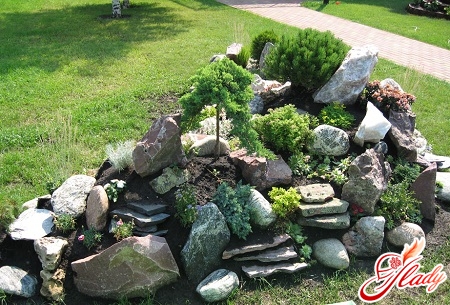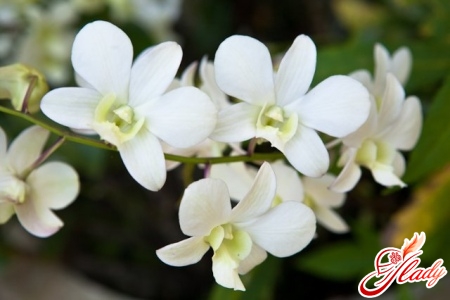 Since landscape design ceased to bethe exclusive prerogative of professionals, our manor and summer cottages have been amazingly transformed. But here's what's remarkable. This transformation does not always happen the way we would like it to. It seems that the vegetable plantations have disappeared, and in addition to the usual flower beds, new-fangled alpine slides and rockeries have appeared. Ponds and ponds, waterfalls and streams, paths of all kinds, lawns and trimmed hedges, but still something is wrong. Our design delights do not pull the results of the work of gardeners of the past. So what's the matter? The thing is that we are not very familiar with the styles of landscape design, exactly what makes any garden beautiful and harmonious. The stylistic solution and certain rules of each style - that's what you need to know when taking on the difficult (as it turns out) business of landscape design.
Since landscape design ceased to bethe exclusive prerogative of professionals, our manor and summer cottages have been amazingly transformed. But here's what's remarkable. This transformation does not always happen the way we would like it to. It seems that the vegetable plantations have disappeared, and in addition to the usual flower beds, new-fangled alpine slides and rockeries have appeared. Ponds and ponds, waterfalls and streams, paths of all kinds, lawns and trimmed hedges, but still something is wrong. Our design delights do not pull the results of the work of gardeners of the past. So what's the matter? The thing is that we are not very familiar with the styles of landscape design, exactly what makes any garden beautiful and harmonious. The stylistic solution and certain rules of each style - that's what you need to know when taking on the difficult (as it turns out) business of landscape design.
Stylistic Solutions
For all known landscape design stylesthere is a generally accepted classification (it sounds, however, somewhat scientific). Nevertheless, you can try to divide these styles into certain groups. For example, depending on the general impression of "naturalness" or "artificiality", the design of any garden can be attributed to the group of regular or landscape styles, closer to the village or park style. In terms of ethnic coloring, the garden design can be maintained in Western or Eastern traditions, reflect ultra-modern fashion trends or awaken nostalgia for bygone times. Therefore, the stylistic solution for your garden should reflect your vision of the world and your perception of the world. Any style you choose will emphasize your perception of the surrounding space and your concept of natural, but man-made beauty. Nevertheless, in order for everything to turn out truly stylish, you need to know the so-called "signs" and laws of each style in landscape design. By the way, mixing styles here is also quite acceptable and can easily become your stylistic solution. The main thing is that the entire architecture of the garden is subordinated to one idea and organized by uniform creative techniques. And what is interesting is that no matter what stylistic solution you choose for your garden, it will always gravitate either to the clarity and mathematical precision of the regular style or to the meditative mood of the landscape landscape. Because these two directions of landscape design are the style-forming ones. Let's see what the most famous and widespread styles of landscape design in garden and park art are.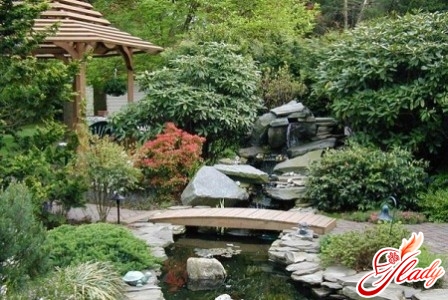
Regular style
It is also called French, classical,formal. This style is well known to you as the style of European palace parks and gardens (the famous Versailles garden). Its main distinguishing feature is symmetry. All elements of the garden should be symmetrical relative to the main or specified axis, and also have strict geometric shapes. The landscape of a regular garden is not particularly relief. It is all located in one plane or on terraces with retaining walls. In such a garden, multi-level terraces are connected by stairs, which become an important decorative element of the garden. Trimmed hedges, geometrically located paths, a green lawn with even borders are also integral features of a regular garden. Taking into account all these features, certain plants are selected for it, namely those that lend themselves well to trimming. It is far from always appropriate to use this style for the design of your garden. Still, this style is suitable for large areas and parks. If you have exactly this kind of residence, intended for receiving guests, holding business meetings and events, and also want to show off your wealth, then choose a classic style. In this case, you will definitely be able to make an impression. But keep in mind that you will hardly be able to do it yourself, you will definitely need assistants for such a stylistic solution.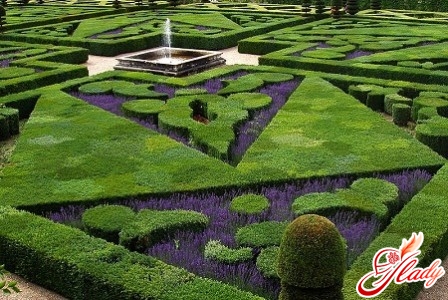
Landscape style
This solution is suitable for those who are mathematicalThe concepts of symmetry and geometry in garden design are not accepted. Because this style is also called natural. What is typical for it? Maximum proximity to the natural landscape: alternation of hills and slopes, smooth and sinuous lines, tiered plantings, picturesque ponds. A garden designed in a landscape style should resemble a cultivated and well-groomed corner of "wild" nature. Therefore, for a landscape garden, plants are selected that usually grow in this area. Paths are made similar to forest and meadow paths, and uneven banks of ponds are framed with natural materials (stone, sand) and near-water vegetation. Usually, this stylistic solution is suitable for country houses and summer cottages. This style is conducive to relaxation and creativity, allows you to get as close to nature as possible and even "dissolve in it", awakening a philosophical mood. This style originated in England and therefore is also known by its second name "English". It is the old English estates that are a striking example of the landscape style. And what Russian gardens of the nineteenth century, designed in the landscape style, looked like can be seen in Vasily Polenov's painting "Grandmother's Yard". Variations on the theme of the regular style
Variations on the Landscape Style
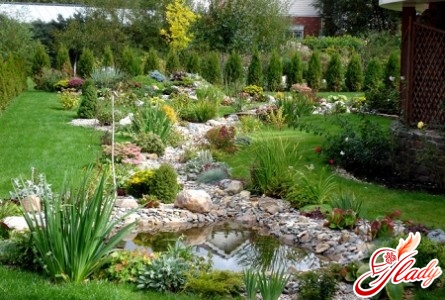
Choose your style
The main stages of choosing a style in landscapeDesign is the study of the relief of your site and its natural vegetation, as well as determining the purpose for which you are creating your garden. The choice of style also depends on the architecture of your house, the size of the site, the proximity of a natural reservoir, the presence or absence of any communications or structures. If you own a large suburban area in a forest area, then it would be wiser to choose a forest style. If your cottage is built on a large and open site, then here, perhaps, a regular (French) style would be appropriate. For lovers of precise forms, but for owners of a small garden, the Italian style will suit. For summer residents - Dutch, and for owners of an estate in the countryside - country or colonial style. Also consider your capabilities in caring for the garden. If you have enough time, you can maintain an exemplary regular garden in any of its variants. If you do not have much time, then it is best to choose some landscape style. Or you can create a special, individual or thematic style. This is no less fashionable today than a mixture of styles. Thematic landscape design style recreates a certain geographical location as accurately as possible or stylizes it according to your fantasies. One of the bright examples of thematic style is a Japanese garden. But what prevents you from choosing certain plants and turning your garden, for example, into a Mediterranean landscape? Or creating a fairytale rose garden, which Gerda found herself in when she went looking for Kai? Or stylizing it as the possessions of a medieval nobleman? What suits you better? Choose. And if it is difficult to settle on something specific, then modern landscape design trends will help you solve this problem.
Modern trends in landscape design
Mix of styles.This is what is fashionable and popular today. In general, it is justified from both a practical and artistic point of view. There are simply an abundance of materials for garden design today, the creative impulses of modern landowners are simply overwhelmed, so they found a way out in such a simple solution as a "stylistic mix". But in order for your garden to be truly stylish, use this technique in accordance with the rules.
Remember that in this case, landscape designstyles allow different, but in moderation, opposite, but territorially separated. And it does not matter what you prefer, the mathematical precision of the regular style or the philosophical mood of the landscape. The main thing is that it is really beautiful and really stylish. Because style is harmony. And isn't this what we strive for, trying ourselves in the role of landscape designer? We advise you to read:




